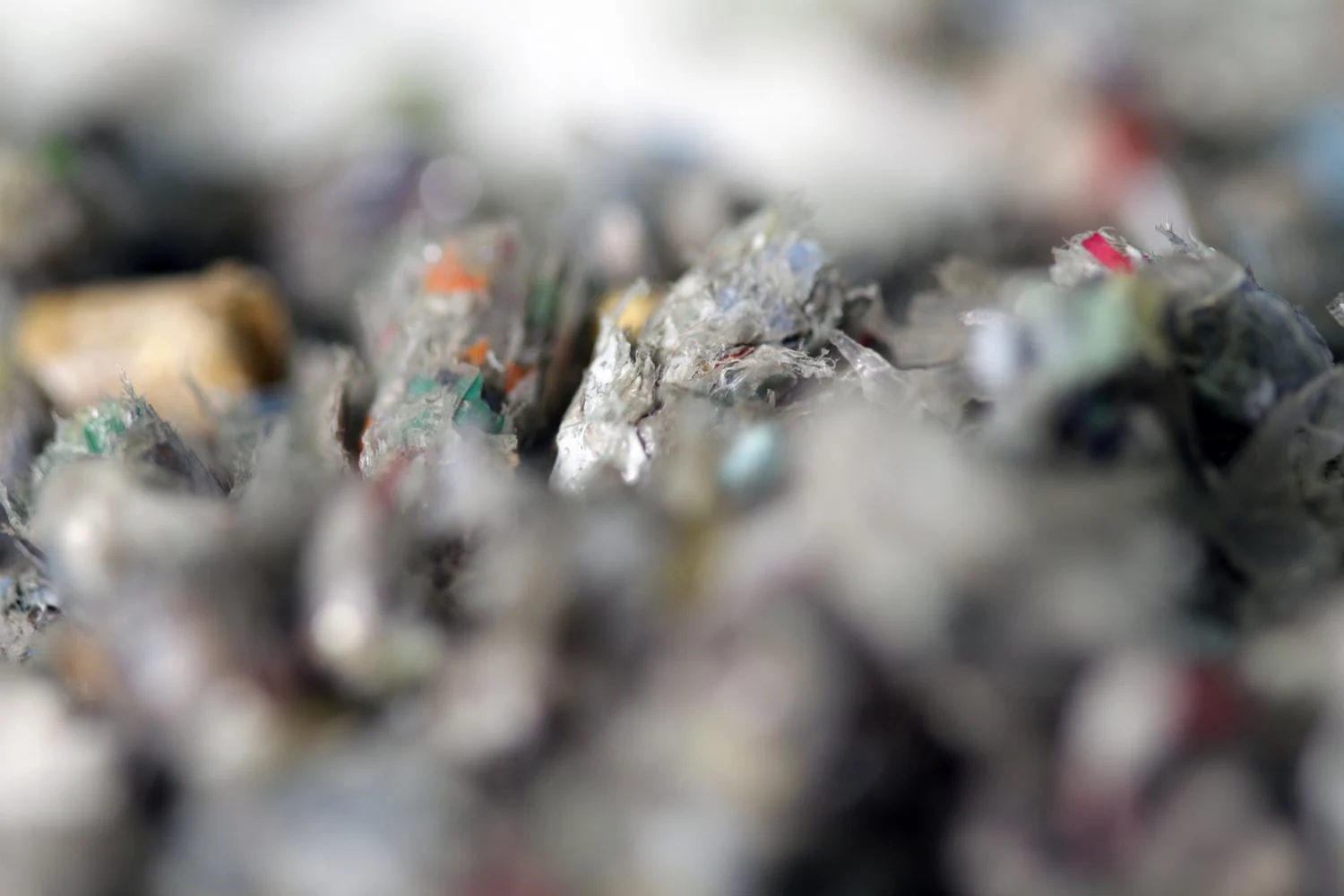
Circular economy
9 minute read
The end of waste as we know it?
Waste is a global challenge that requires a multitude of creative solutions. Decreasing waste while enabling circularity through innovative methods should capture the imagination of consumers, companies and global policymakers.
While recycling currently contributes only a fraction of waste repurposing, global innovators and industry leaders are finding new ways to turn it into sustainable materials or fuels. Indeed, the proverb “one man’s trash is another man’s treasure” is quickly morphing into “all trash is treasure” as waste utilization processes advance. The growing demand for new solutions to power global economies must drive our expectations, and with numerous burgeoning technologies, we should not only expect, but demand solutions that accelerate the elimination of waste. Until recently, using waste as raw material for high-quality products seemed unattainable. This, however, is about to change. In the following, through five exciting scenarios, we illustrate how the concept of waste, as we know it, is rapidly evolving.
1. Used cooking oil becomes renewable fuel
For centuries, waste has been dumped into nature without much thought of using it to cut emissions. Fast forward to present day, we are now seeing used cooking oils and fats transformed into high quality renewable diesel or sustainable aviation fuel, replacing conventional fuels without the need for engine adaptation. It can even be used to produce renewable hydrocarbons for the manufacturing of renewable plastics and chemicals.
In recent years, we have witnessed a rise in efforts to transform household waste, cooking oils and animal fats into cleaner energy. These efforts have largely been driven by the transportation sector’s attempt to cut emissions. The industry accounted for almost a quarter of global carbon dioxide emissions in 2019. Another driving force is the need to reduce the use of non-renewable fossil raw materials in the generation of chemicals and polymers.
The race to reduce emissions is reflected in daily news stories from different corners of the world, with companies, governments, local municipalities, and even the military, embracing available technologies to power their operations.
Bournemouth, a resort town on the south coast of England, recently announced that the city council’s waste collection vehicles will run on Hydrotreated Vegetable Oil (HVO), a name used for certain types of renewable fuels or advanced biofuels. "This is an important trial that helps us work towards the government’s waste strategy pledge to eliminate food waste to landfill by 2030, by reusing cooking oil waste and converting it into HVO fuel as an alternative, environmentally friendly fuel in our vehicles,” said Councillor Mark Anderson.
The constant flow of companies embracing alternative methods to power fleets or factories encourages businesses in the food industry to rethink their waste stream and see used cooking oil as a resource instead of waste. Last year, McDonalds in the Netherlands joined forces with Neste and logistics company Havi to set up a circular process in which used cooking oil is collected from restaurants and converted into fuel for food delivery and waste collection vehicles.
2. Advances in plastics recycling turn plastic waste into new materials
Plastics recycling is an established form of waste repurposing, but it’s not always an efficient process. The traditional way is mechanical recycling, which involves grinding down or remelting plastics to small flakes or pellets that can be reformed into new products. But this method can only be used for certain types of plastics, while others currently end up in landfill or are incinerated. Mechanical recycling is also only feasible for a limited number of times on the same piece of plastic.
This is where chemical recycling comes in.
Chemical recycling enables recycling of previously hard-to-recycle plastics by breaking down the molecular structure of the material. The resulting oils can, through further refining, be upgraded into feedstock for new, high quality plastic products. Unlike mechanical recycling, which has limited applications, chemical recycling essentially forms entirely new plastics, which can be used in all applications without limitation.
“We do not want to compete with mechanical recycling,” says Outi Teräs, Head of Technology Commercialization of Chemical Recycling at Neste. “Rather, we aim to complement it.”That means that while mechanical recycling will still play an important role, overall recycling rate can be increased by chemically recycling plastics that currently end up in landfill or incineration.
We do not want to compete with mechanical recycling. Rather, we aim to complement it.
There are still a few challenges to overcome before we see chemical recycling at a large scale. While the technologies are being developed, regulation and standards also need further development to enable widespread implementation of chemical recycling. New ways to think about the value chain, free movement of goods and quality standards are needed, when what used to be “waste” now becomes a valuable resource.
Chemical recycling enables recycling of previously hard-to-recycle plastics, by breaking down the molecular structure of the material.
Teräs is optimistic about the future of plastics recycling.“Neste has set the target that by 2030 we will have the capability to process over one million tons of waste plastic per year and bring it back into the circular economy as new polymers and chemicals.”
Neste has already started refining liquefied waste plastic on an industrial scale. Governments around the world have taken notice of the chemical recycling opportunity. Just recently, the government of Singapore announced that it plans to develop its chemical recycling industry. According to Grace Fu, the Minister for Sustainability and the Environment (MSE), the national goal is to achieve a 70 percent overall recycling rate, and to reduce waste sent to Semakau Landfill by 30 percent per capita a day by 2030.
“Chemical recycling can help to close the plastic waste loop in Singapore as it is able to treat contaminated plastic waste, which cannot be mechanically recycled, into higher-value products such as pyrolysis oil which can then be used to manufacture new plastic products,” said the MSE.
3. Municipal solid waste becomes jet fuel
The World Bank estimates that the global amount of municipal solid waste is increasing from 2.01 billion tons in 2016 to 3.40 billion tons in 2050. At the moment, the majority of this waste still ends up in landfill, and only a fifth of it is recycled. Future recycling methods need to be able to not only handle the increasing amount of waste turnover but also increase the amount that’s recycled.
One promising area of development is the processing of municipal waste into chemical products such as ethanol or jet fuel.
“Municipal solid waste based fuels are not science fiction, but a sustainable and scalable way to power aircraft and other vehicles,” says Virpi Kröger, Head of Initiative, Municipal Solid Waste, at Neste.Neste’s Aviation feedstock platform is currently exploring the possibility of using municipal solid waste as a source material by looking for partners.
Kröger lists the type of expertise they are looking for: “We need to cooperate with waste management, waste sorting and treatment facilities, waste refining technology providers, and other commercial players.”
Solid waste can either be sorted into components that can be recycled separately (such as organic materials or plastics), or treated collectively. Some of the methods by which municipal solid waste can be processed at a large scale include gasification (which breaks down pre-treated waste at high temperatures to be converted into fuels and chemicals) or fermentation of cellulose-based materials into ethanol that can be further processed into jet fuel.
4. Carbon dioxide is captured and turned into fuels and materials
Reducing global carbon dioxide (CO2) emissions is one of the main strategies to address the climate crisis. At the moment, CO2 released from industrial processes contributes to a large fraction of global CO2 levels. But these CO2 emissions can be captured and converted into new materials through electrochemical processes, turning a problem into a solution.
The conversion of CO2 into new products is also known as carbon capture and utilization.Power-to-X enables the production of renewable hydrogen and conversion of CO2 into fuels, chemicals and materials. This is done using renewable electricity. “These technologies are especially interesting in applications where direct use of electricity is challenging, such as in aviation, or in plastics and chemicals industry applications enabling sequestration of carbon into durable and recyclable materials,” says Suvi Kurkijärvi, Business Development Manager for Innovation, Renewable Hydrogen and Power-to-X at Neste.
The key technologies for producing renewable hydrogen and combining it with captured CO2 to produce fuels and materials are already available. Bringing them together in an industrial fashion is the current focus of development work in this area. Finally, as Kurkijärvi points out, “the biggest challenge is to make it economically viable”. However, the costs are expected to decrease as the supply of renewable electricity grows and the technologies scale up.
There are already several projects around the world that are showing the possibilities of capturing and reusing CO2. The EU has a hydrogen strategy which incentivizes solutions that implement low-carbon hydrogen, and Kurkijärvi thinks this is the first step to seeing more interest for Power-to-X solutions that use both hydrogen and CO2.
5. Circular processes will encourage the development of new regulations around waste
All of the aforementioned solutions, especially the ones that are currently in the early stages of development or testing - such as municipal solid waste processing or the conversion of CO2 into fuel - require us to rethink waste. While new circular processes can be costly to implement at a large scale, a change in policies and regulations around waste is required to switch from small local demonstrations of new waste applications to large scale circular processes.
When they see that the technology is possible, policymakers will take it into account and start to build incentives for it.
Before policies can change, smaller scale demonstrations in new fields of recycling will set an example to show what’s possible in the future.“When they see that the technology is possible, policymakers will take it into account and start to build incentives for it,” says Kurkijärvi.
And with new incentives in place, much of our future waste may instead be used to develop new products.
Credits: Dr. Eva Amsen, a science writer and communicator whose work has appeared on Forbes, Nautilus and The Scientist. Twitter





